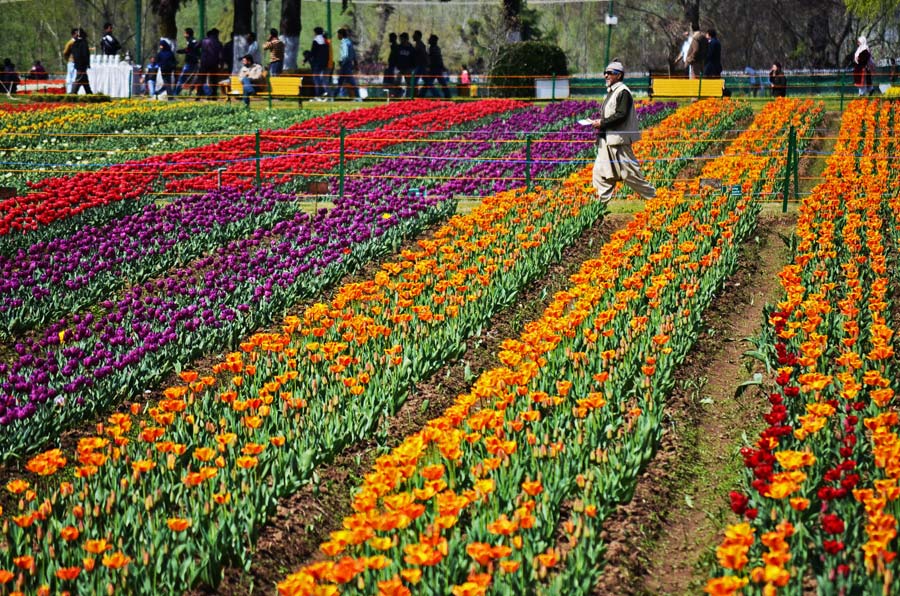by Tasavur Mushtaq
SRINAGAR: After battling severe winter for months, when snow begins to melt away and darkness falls later each day, it indicates spring has sprung. Locally known as sounth, spring is the season of losing the winter layers. A symbol of life, it represents the spell of rejuvenation. Reborn, new blooms appear everywhere. Be it almonds, peaches, pears, cherries or the bright yellow mustard flowers. Life in the valley appears in colours.

As sweet fragrance signals the arrival of spring, a sea of blooming Tulips officially inaugurate the season in Kashmir. This time, however, the routine was ruined. Spring at the doorstep surrendered to the onslaught of the pandemic. The blooming Tulips are withering without catching an eye.
Ruined Romance
As the spring arrives at the boundaries of Kashmir, officials announce a Tulip festival. In an effort to advance the tourist season, the festival held at Tulip garden in Srinagar attracts people from everywhere, both local and outsiders.
But this time when the arrangements were finalised, the pandemic punched the blooming Tulips to wither without being seen. The longing for this year’s romance with 1.3 million Tulips along the Zabarwan hill has been ruined, completely. Filled with desolation, the grieving garden is witnessing the fall.
An elaborate year-long journey, it is a process involving concerted efforts. The hard labour of gardeners for months together. Considerable capital investment projects, Tulips are very short-lived flowers – they live merely fup to 17 days. They do not bloom all-year-round. A maximum for 30 days season, the mesmerizing magnificence and a walk amidst these parallel rows of bright coloured flowers make a mark for a lifetime.
Spread over 30 hectares of land, there are over 60 varieties of Tulips, nourishing around 1.3 million tulip bulbs every season. All imported from Holland. The garden at 5600 feet altitude is carved out of seven terraces which create a gently sloped ground to enable to have a view of the entire garden from any direction.
During the passage of the last 13 years, the garden had additions. More varieties were introduced. Plants like Daffodils, Hyacinths, Narcissus and other ornamental plants are planted in the garden to decorate the area. Additional facilities like washrooms, water points and lately Wi-Fi were installed to woo the visitors.
An attention grabber for every tourist, the government had hired floriculture specialist from Holland, John Neele to provide tips for maintenance of the flower beds in dry weather conditions. He also advised how to produce tulip bulbs in Kashmir.
Tulip Trails
The idea to have Tulip garden in Kashmir was conceived and conceptualised by Ghulam Nabi Azad, former chief minister of the erstwhile state of Jammu & Kashmir. It was the year 2007. Known to be in love with flowers, Azad, a trained zoologist created Asia’s largest Tulip garden in Kashmir. In between, Siraj Bagh in Srinagar became Indira Gandhi Memorial Tulip Garden. Located at the foothills of the Zabarwan range, it has Dal Lake and snow-covered mountain peaks in the backdrop.
The festivities at Tulip garden in a way became an alternative to the erstwhile practice of visiting badamwaer, almond clove in the old city. The garden has also emerged as a new destination for the Bollywood crew in Kashmir. It has filled backgrounds in many movies, colourfully.
Replicating the model of Srinagar in south Kashmir, the government in the year 2013 had sanctioned Rs 22 crore for development of Tulip garden spread over 471 kanals of land in Islamabad. However, there has been no progress on the project initiated by the floriculture department.















